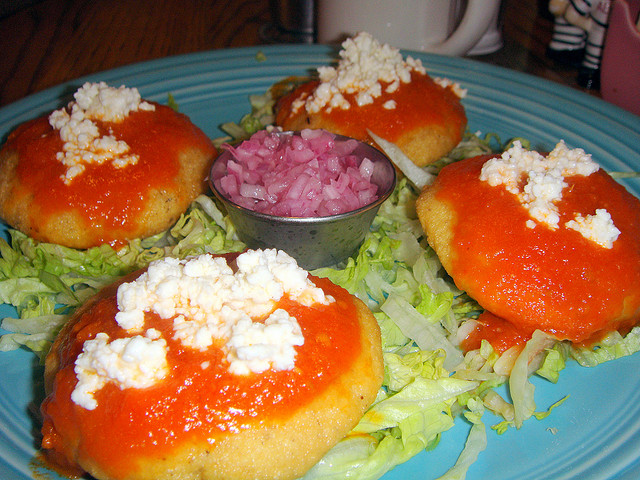In Merida, when the Carnival comes to an end, the period of Lent begins, a period of forty-six days from Ash Wednesday to Good Friday.
For many Yucatecan families it is a tradition and custom not to eat meat on Fridays (during Lent), and that this is the perfect time to have some “Brazo de Reina” or Dzotobilchay which means ‘corn dough cooked with chaya’, a pre-Hispanic plate made of corn dough, lard, chaya leaves, toasted and ground local pumpkin seed, and boiled egg (parboiled), accompanied by tomato sauce and sprinkled with ground nugget; a mighty delicious meal.

Papadzul
One of the other favorites for this time of the year is papadzul, which, according to some Maya experts, means ‘food of the master’, from the roots ‘papa‘, food, and ‘dzul‘, gentleman; while others sustain that the word means “muddy and soaked” (from ‘papak‘, smear, and ‘zul’, soak).
Fact is, that papadzul is a pre-Hispanic gastronomic delicacy made from corn tortilla, stuffed with grated egg (sancochado), bathed in a local pumpkin seed green colored paste with epazote and tomato sauce.

Joroches
The ‘joroches’ or ‘joloches’, from the Maya word jolo’och, which refers to corn leaves, is basically a stew based on corn dough prepared in the form of balitas (croquettes), added with chaya, cooked in bean strained with butter and seasoned with a fried tomato sauce and topped with a little white cheese, a very simple, but delicious and highly nutritious dish.

Polcanes
Yucatán also has the polcanes, from the Mayan words ‘pool‘, (head) and ‘can‘ (snake), made from corn dough with the shape of a snake head, stuffed with ‘ibes‘, tender white beans, cooked with ground nugget and scallions, fried in oil and served with tomato sauce, chopped cabbage or onion cut into thin cubes, or julienne, topped with white cheese, and without missing a rich habanero chile sauce made ‘kut‘ (mashed), with sour orange juice.

(Photo: Recetas de comida y Antojitos Mexicanos)
Of course, the custom is to have a different dish each Lent Friday, for seven weeks, until Holy Week.
Source: laverdadnoticias.com
The Yucatan Post





